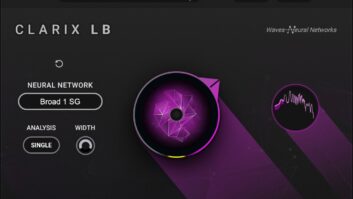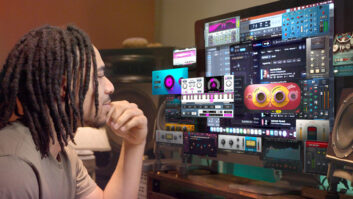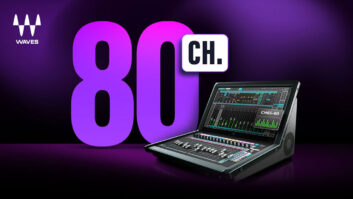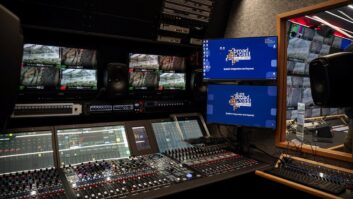Tel Aviv, Israel (May 28, 2019)—The audio team for the Eurovision Song Contest 2019—the world’s longest-running international television music contest and, with an audience of over 200 million, one of the most-watched broadcast events worldwide—used Waves plug-ins and the Waves eMotion LV1 live mixer on the three-day event.
Broadcast from Expo Tel Aviv, May 14-18, Eurovision 2019 featured three live shows—two semi-finals and a grand final—held over three days, with 41 competitors, four hosts on stage, and numerous guest performers, and featured an exclusive two-song live show by guest star Madonna.
“The heads of sound of the local Eurovision production, Yair Goren and Yossi Edri, suggested that Pro Tools/LV1 engineer Jonathan Jacobi and myself mix the whole thing on the Waves eMotion LV1 mixer,” says broadcast mix engineer Omer Barzilay. “I was absolutely thrilled to be able to use Waves plug-ins in such an easy and flexible way, running the plug-ins directly within the software mixer. For me, Waves is the obvious choice for broadcast mixing, so that was the perfect solution.
“Also, when it comes to broadcast, you are usually looking for system redundancy and backups; eMotion LV1 delivered just that. It is a clear advantage to have a software-based system: we were able to easily create two identical systems with two Waves SoundGrid servers each, and we created even more backups on our personal laptops.”

Barzilay continues, “One of the greatest advantages of using the LV1 is that I was able to mix most of the songs ahead of time. I was mixing about a month and a half in advance of the show, at my studio, by routing all the stems that I received ahead of time from Pro Tools to eMotion LV1, creating all the automations and effects so they were ready for the show. Time is crucial when mixing so many different songs for such an immense musical event, and if I hadn’t used a software base mixer, I would never have been able to be prepared this way.”
FOH mix engineer Eran Ben Zur comments, “One challenge of the show was to mix not just the music, but also the mics of the four hosts interacting on stage. For that, I used Waves’ Primary Source Expander (PSE) and the X-FDBK feedback elimination plug-ins, followed by the Dugan Automixer on each host’s mic. All these were then routed as a group, processed by Waves MaxxVolume.”
The FOH setup included two DiGiCo SD7 consoles with Waves MultiRack SoundGrid setups complementing each console, Waves SoundGrid Extreme Servers and touch screens to run Waves plug-ins, plus two DiGiGrid MGB audio interfaces and two Mac computers running Waves’ Tracks Live DAW for multi-track recording.
Waves • www.waves.com






